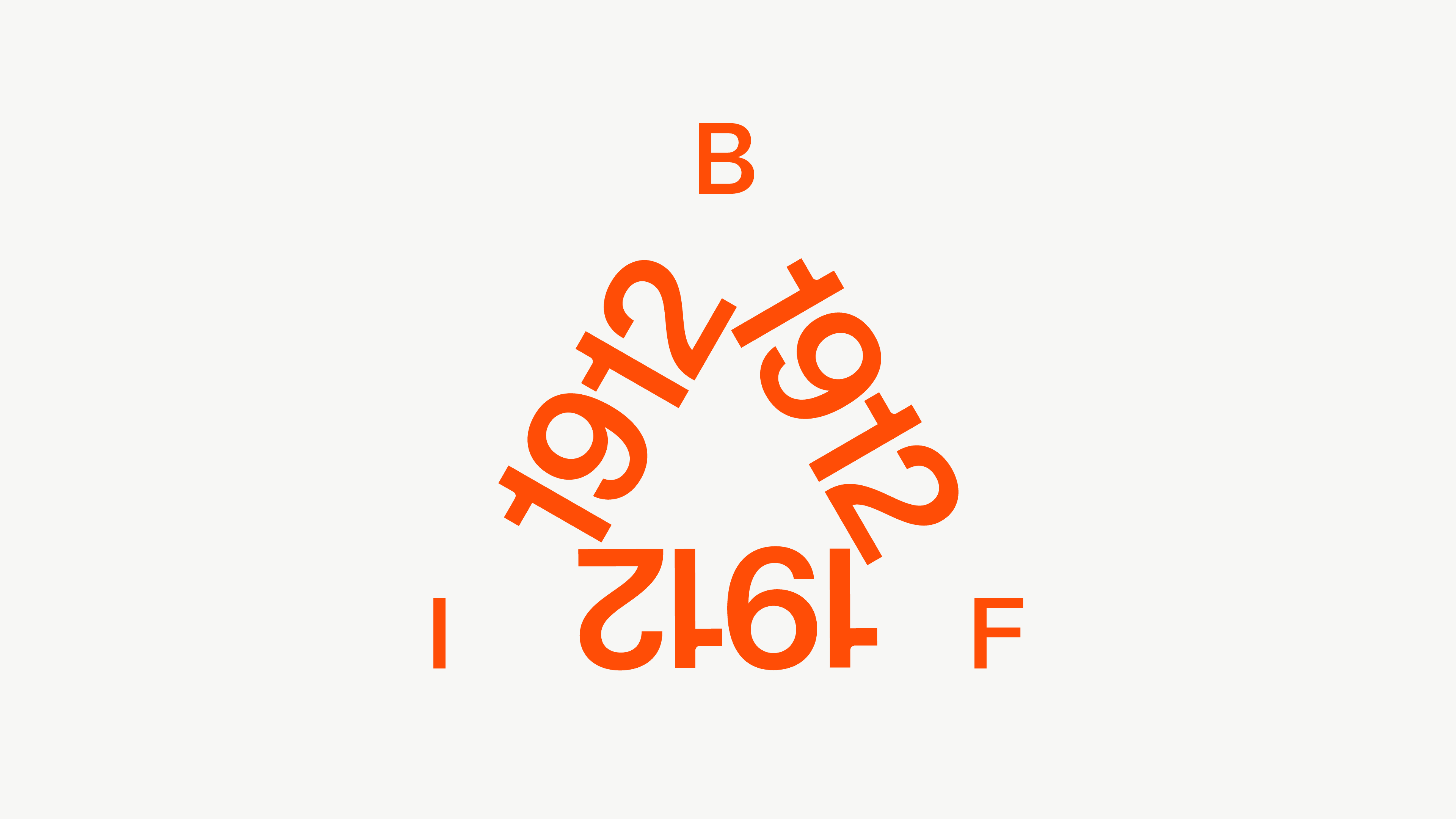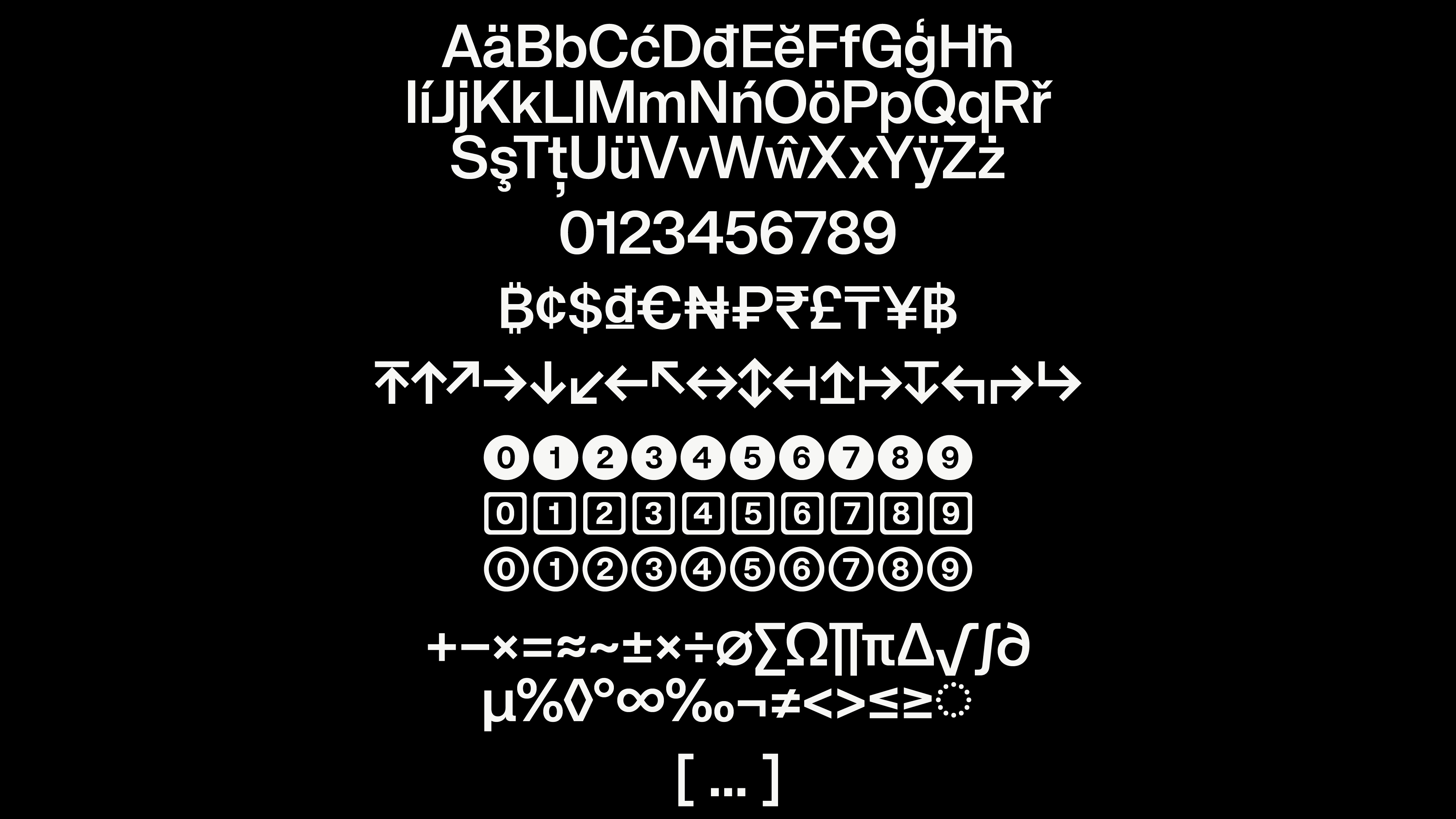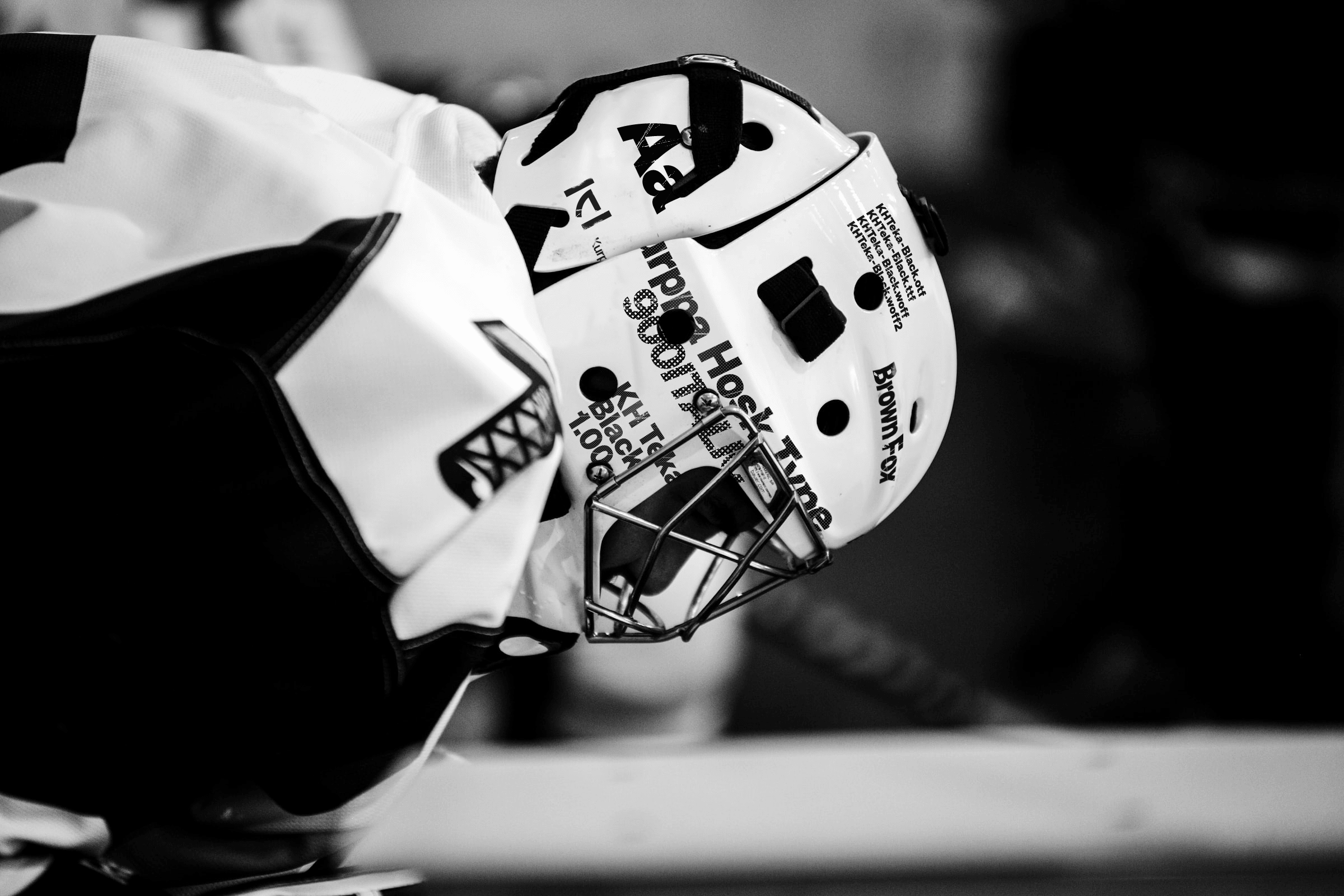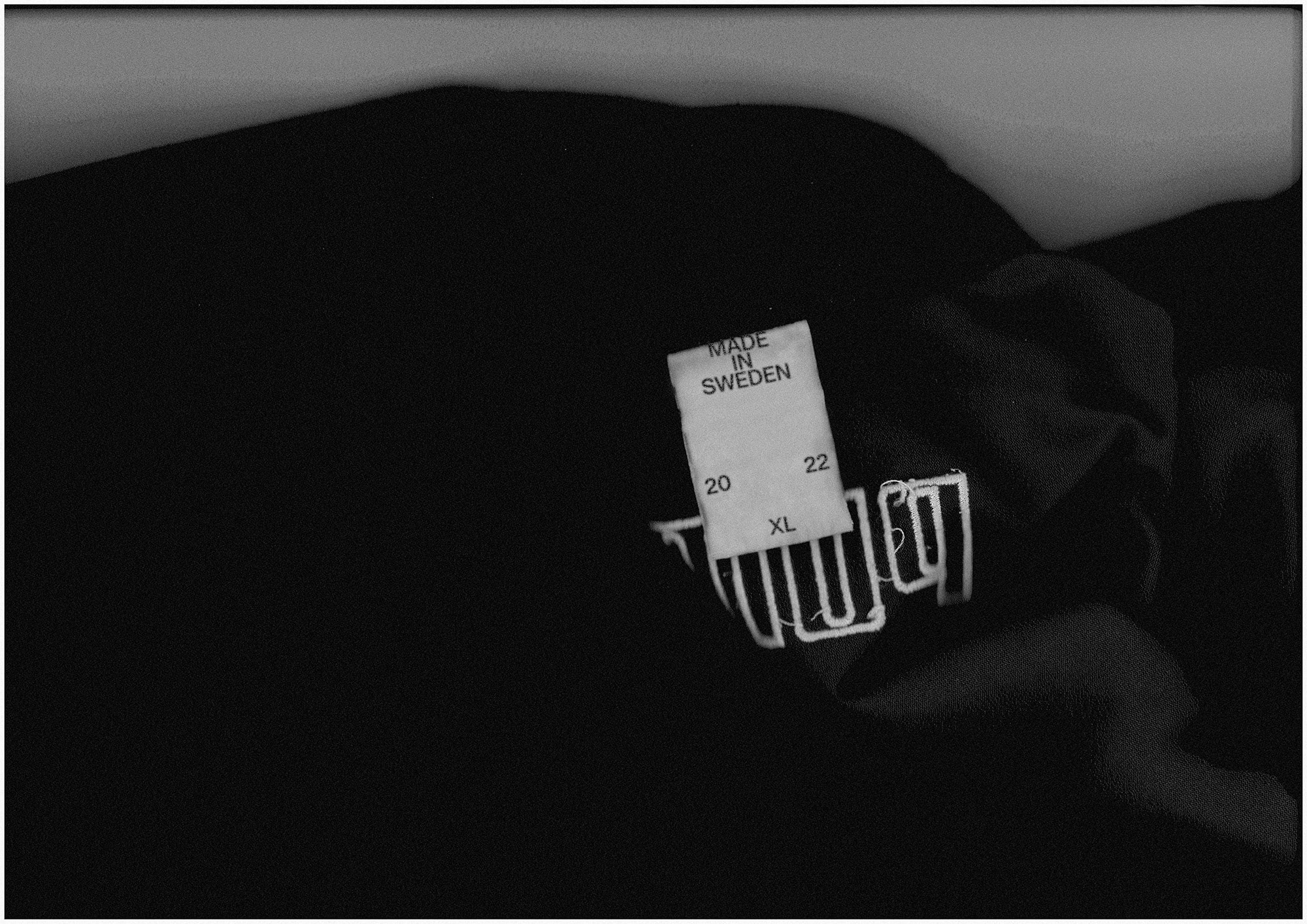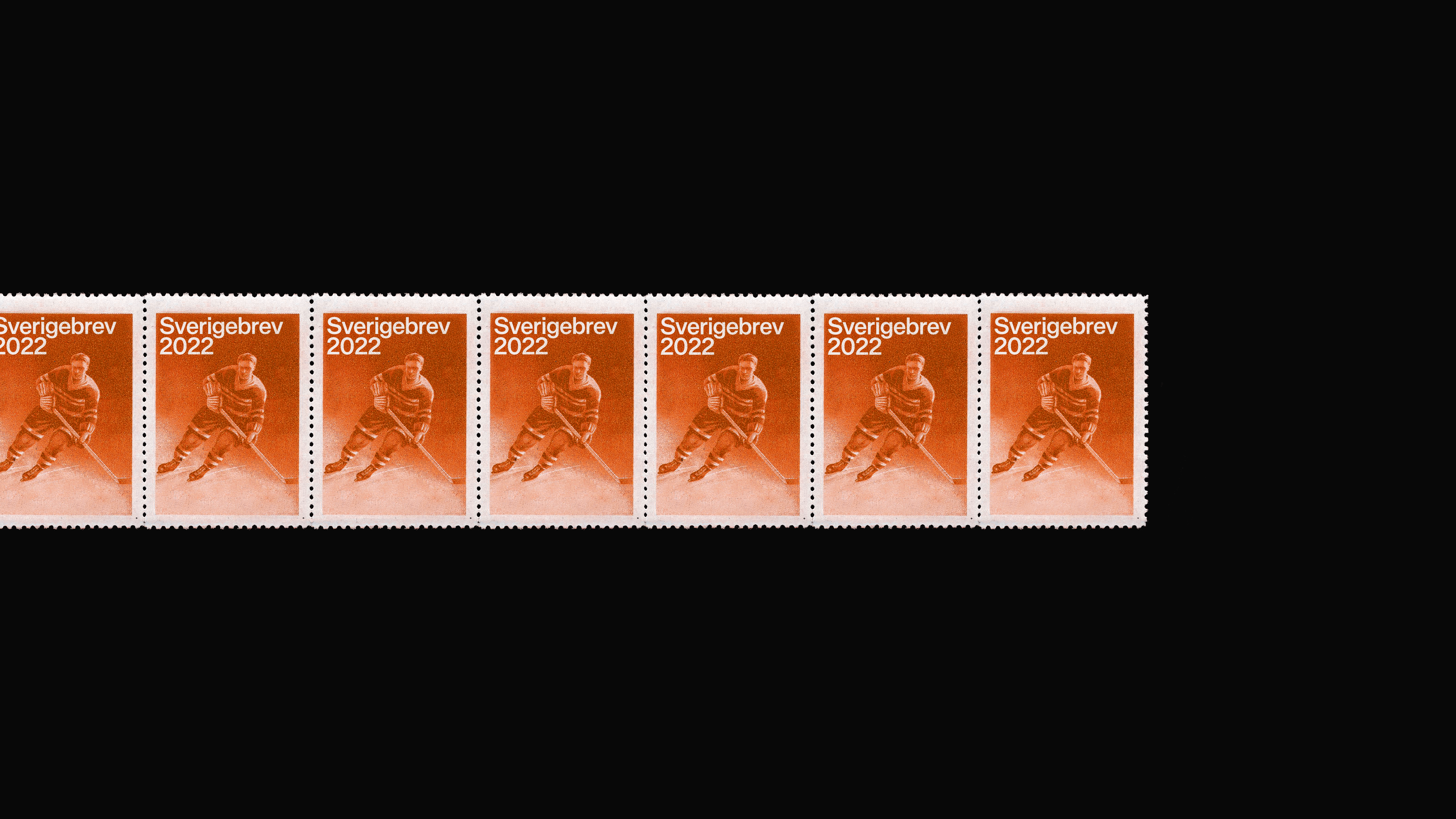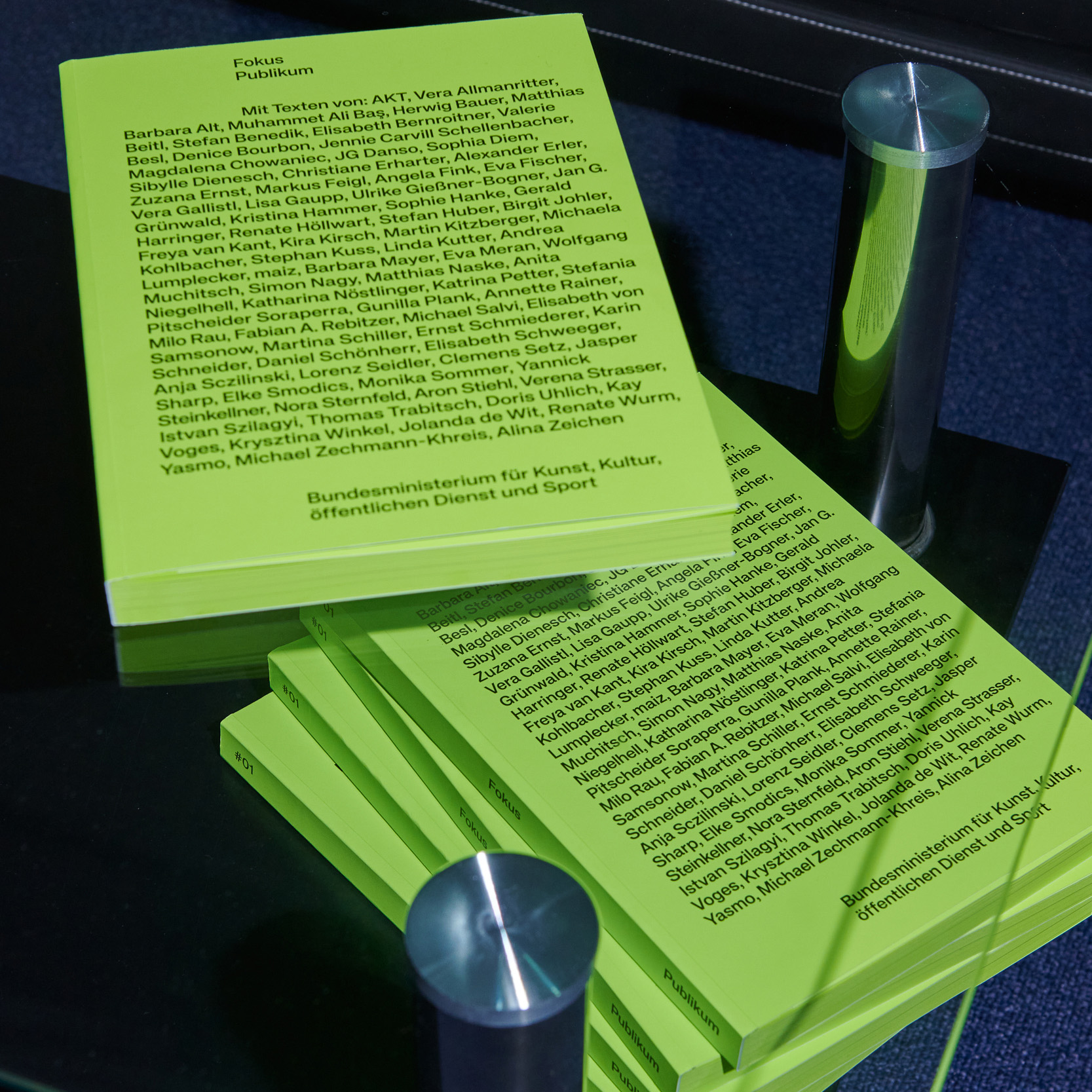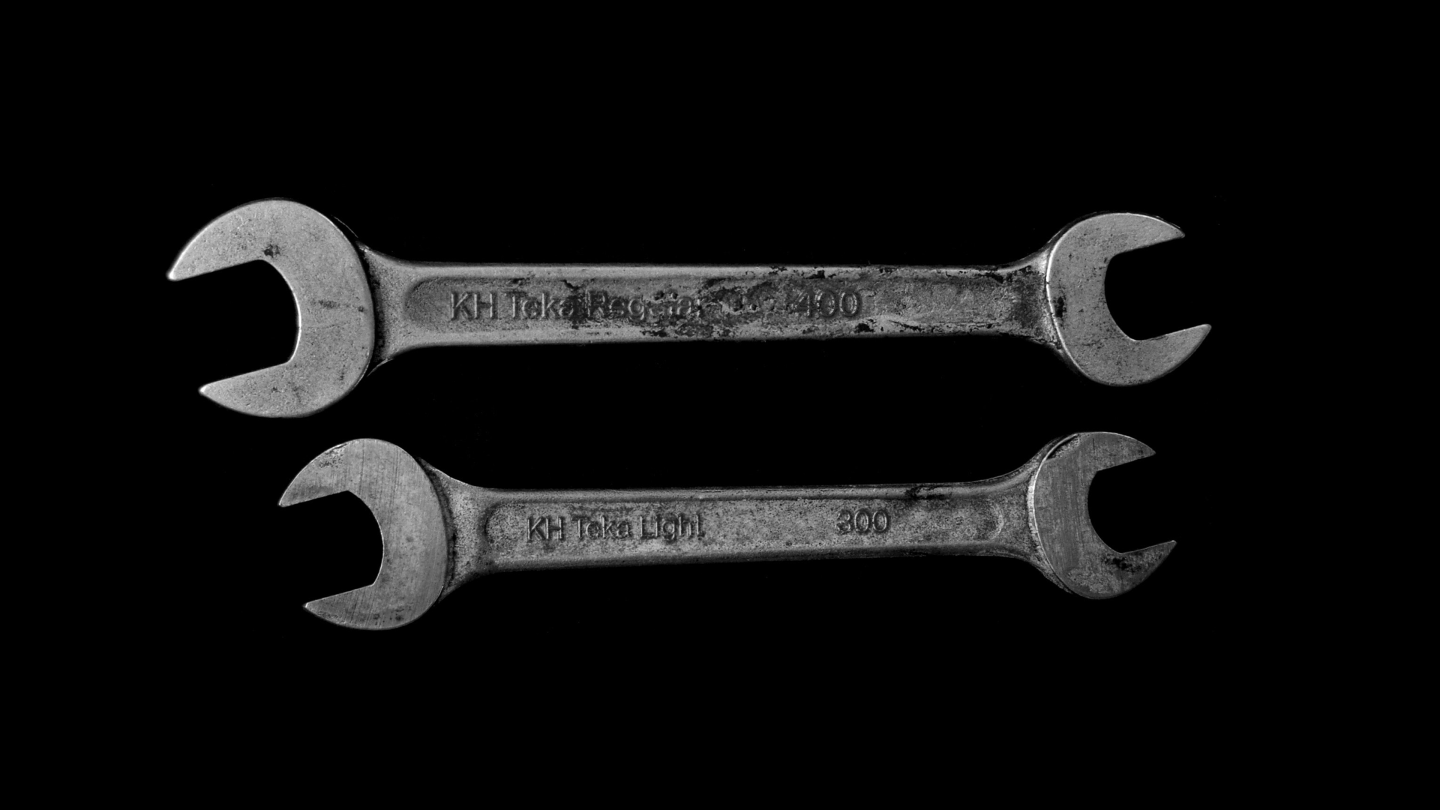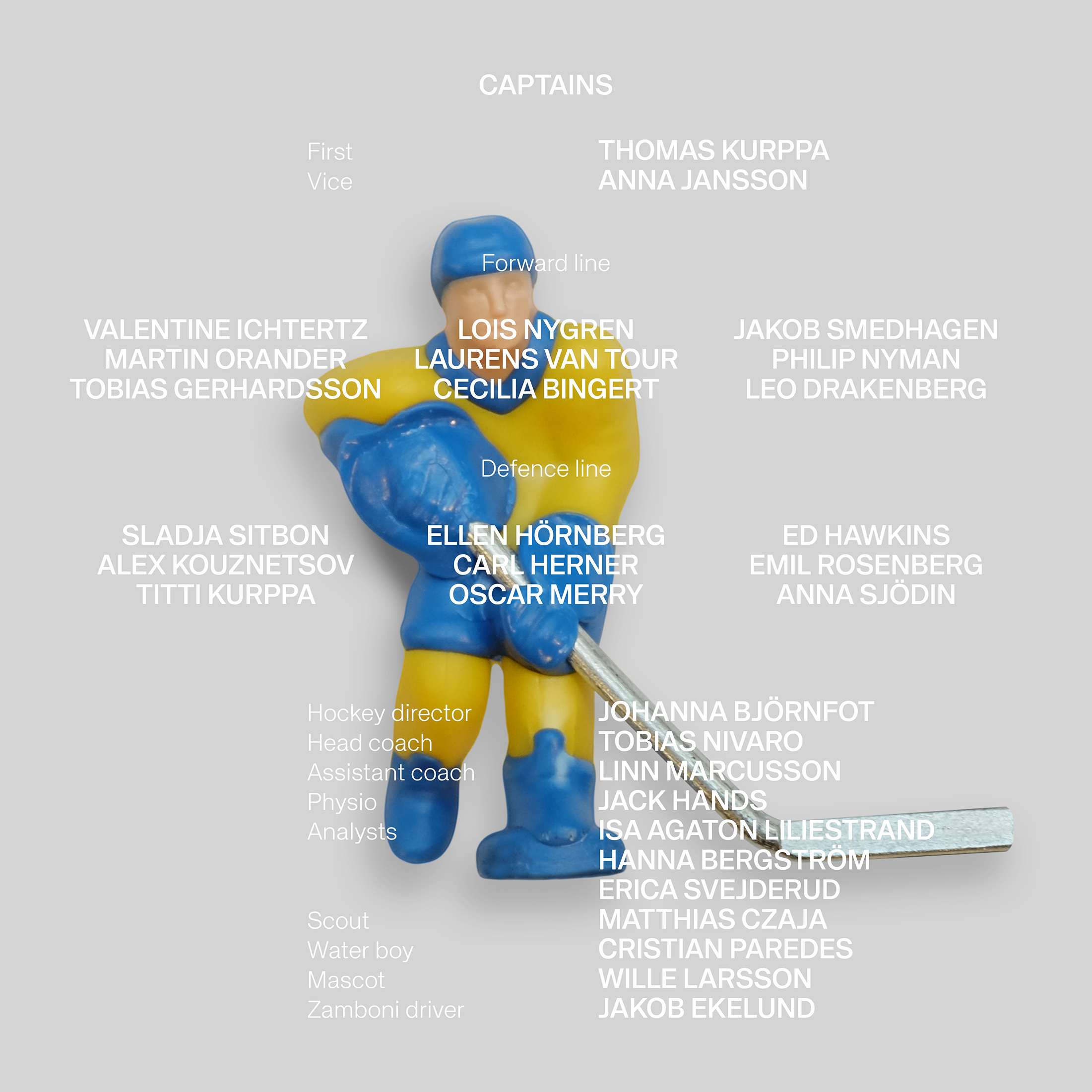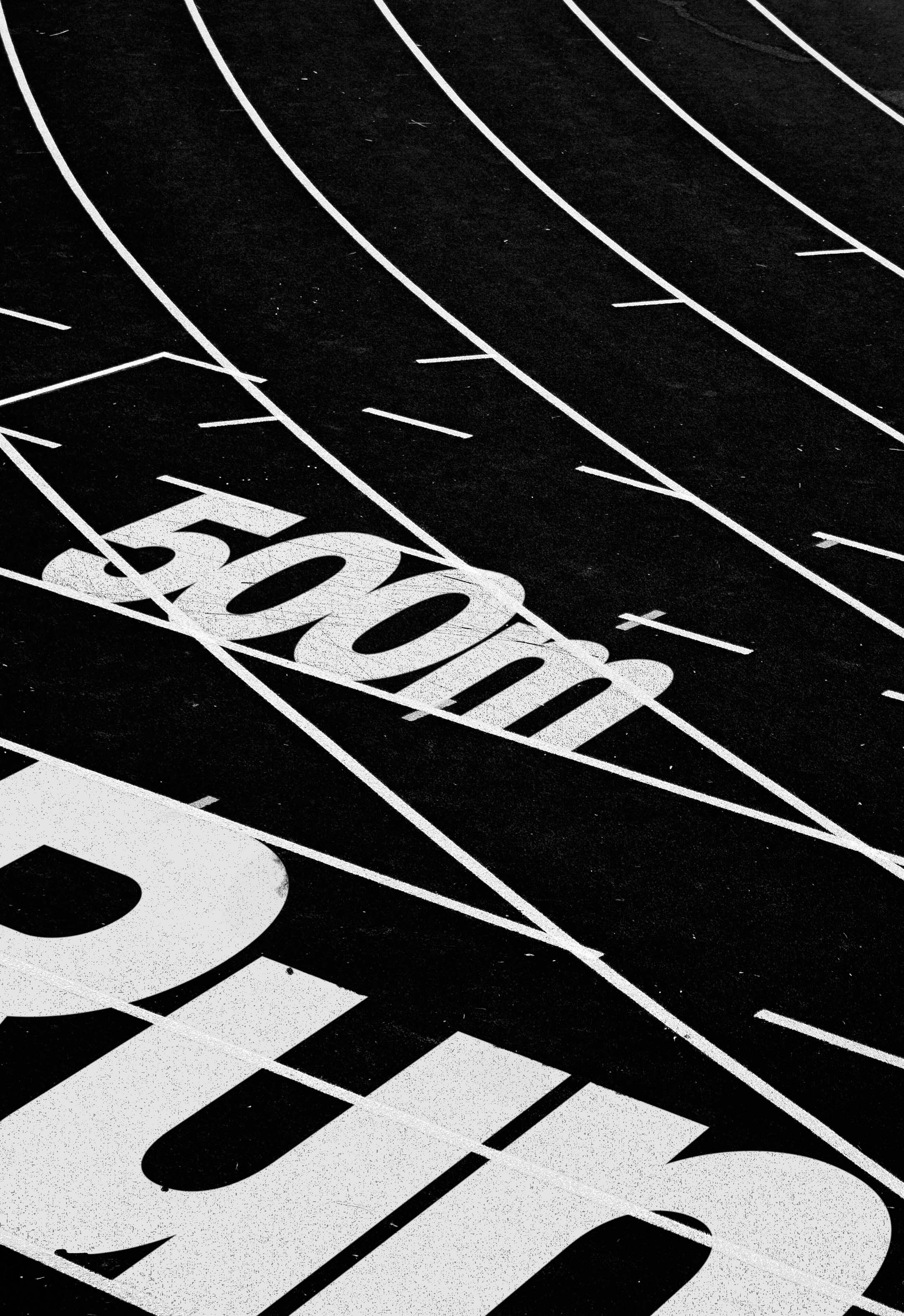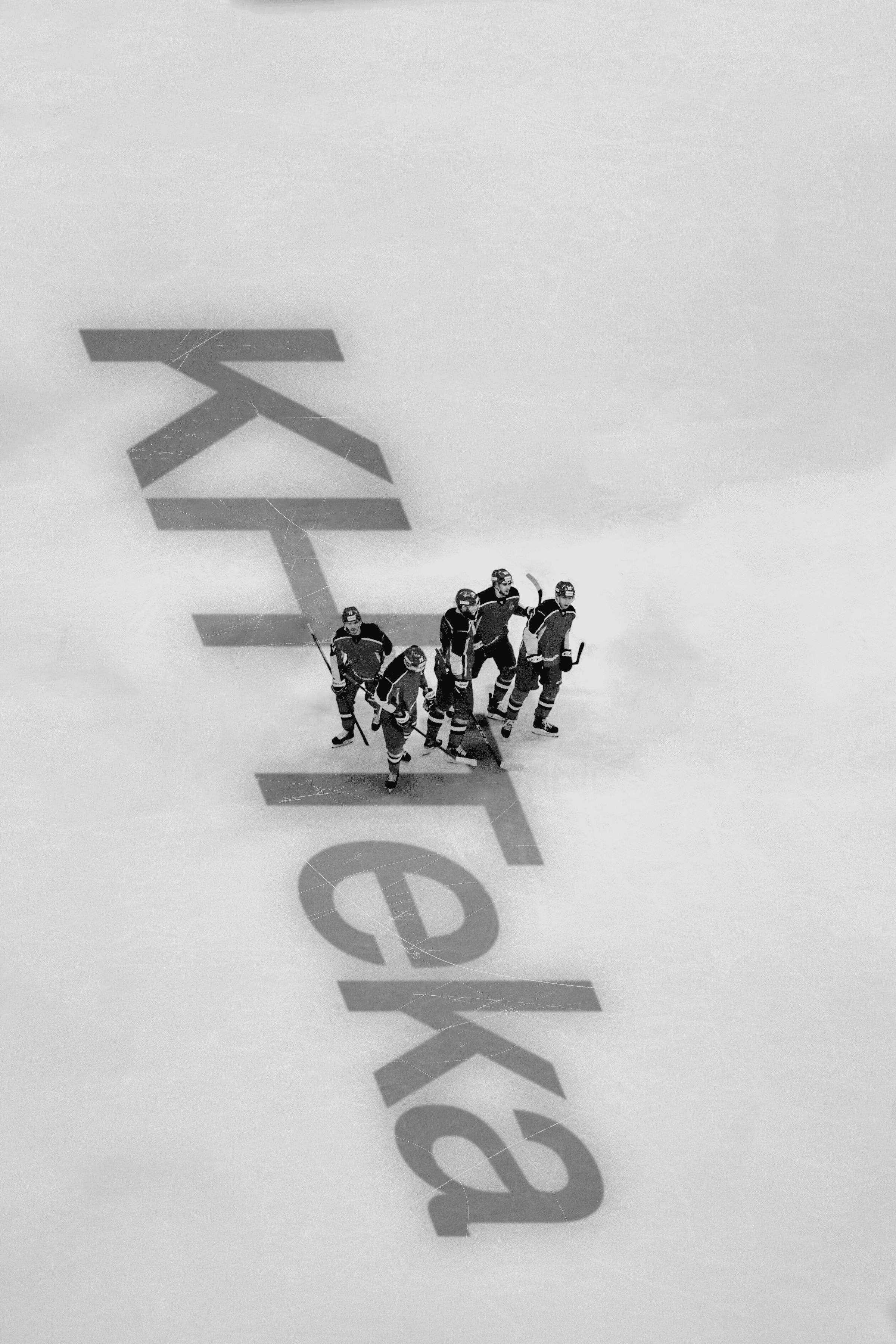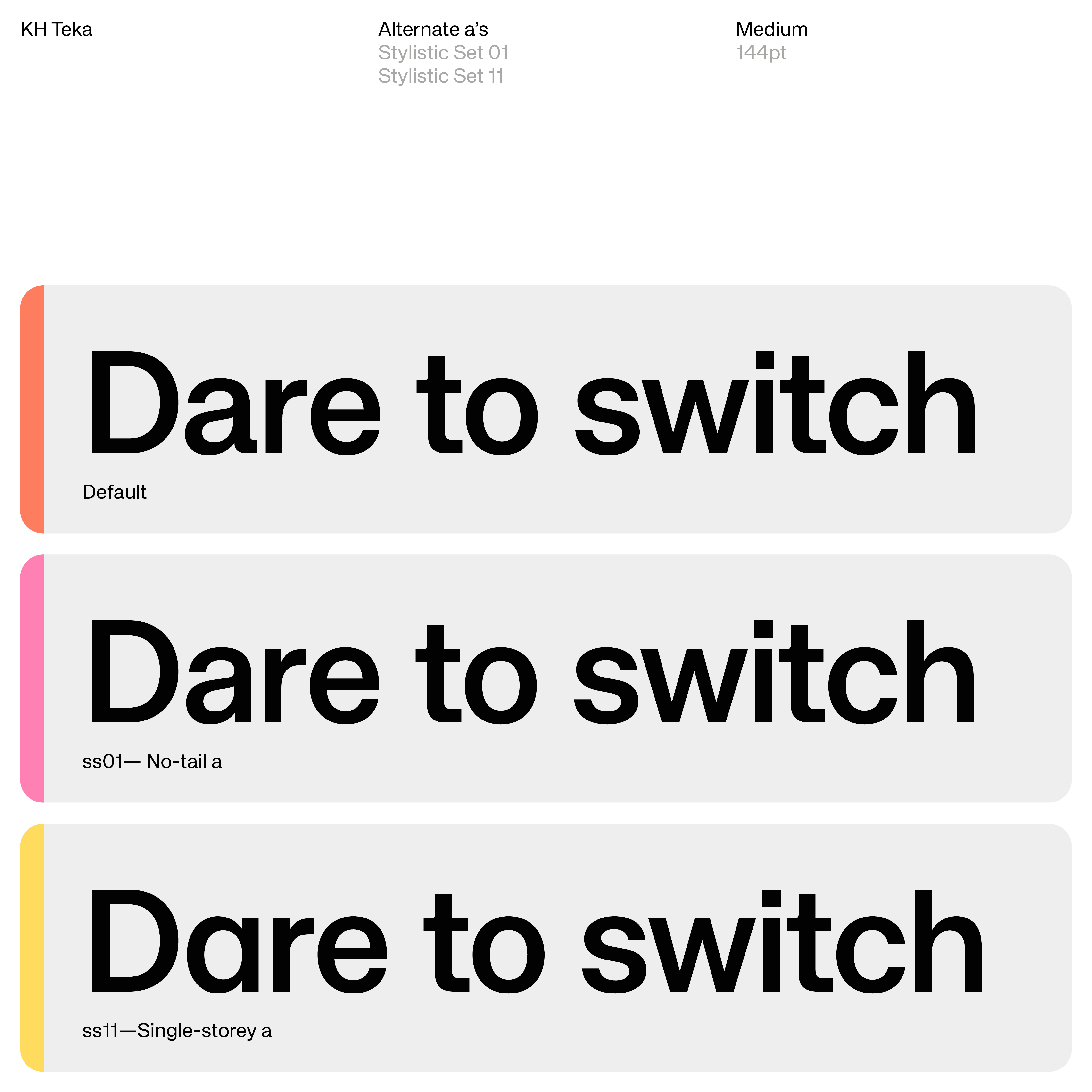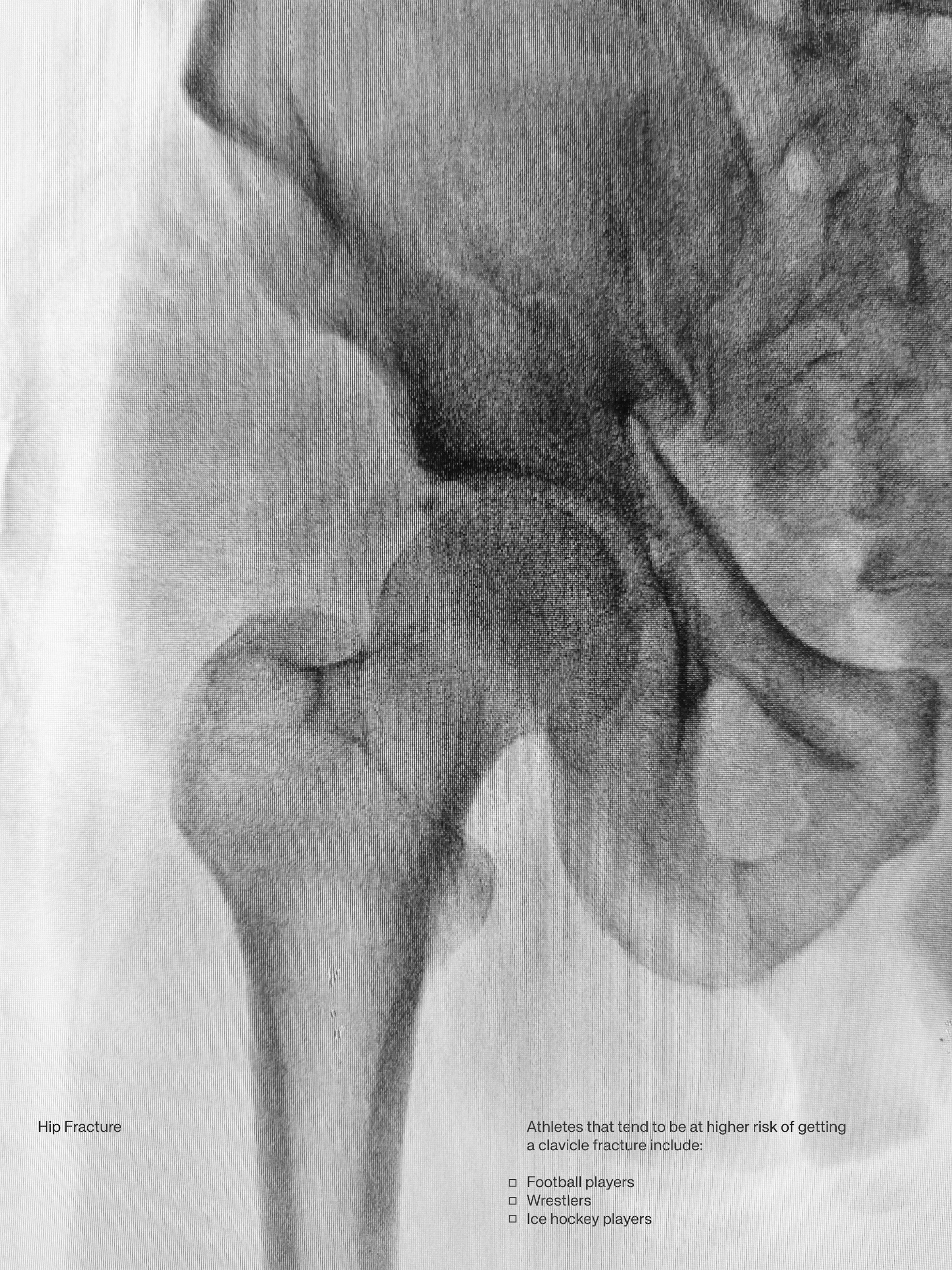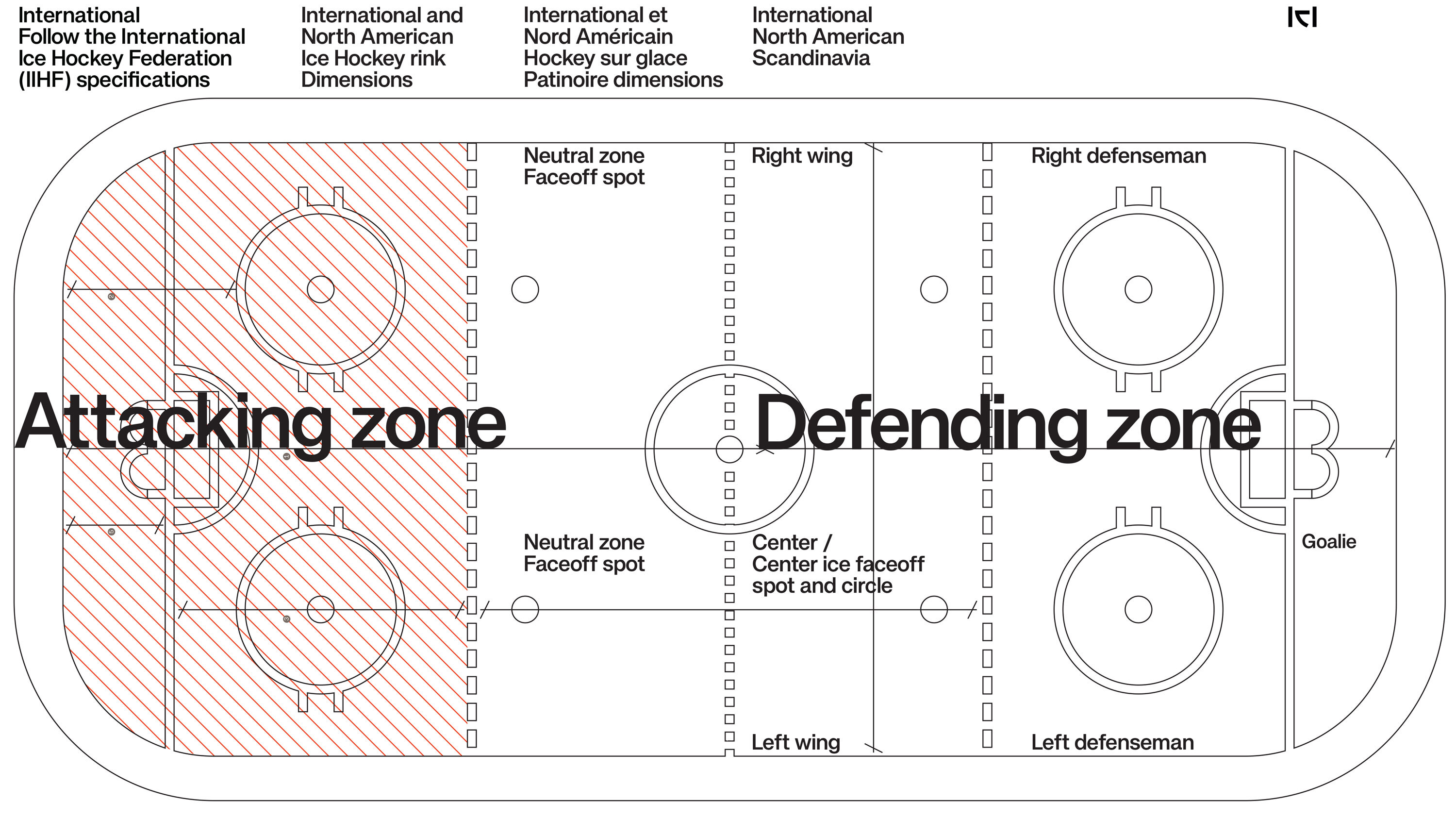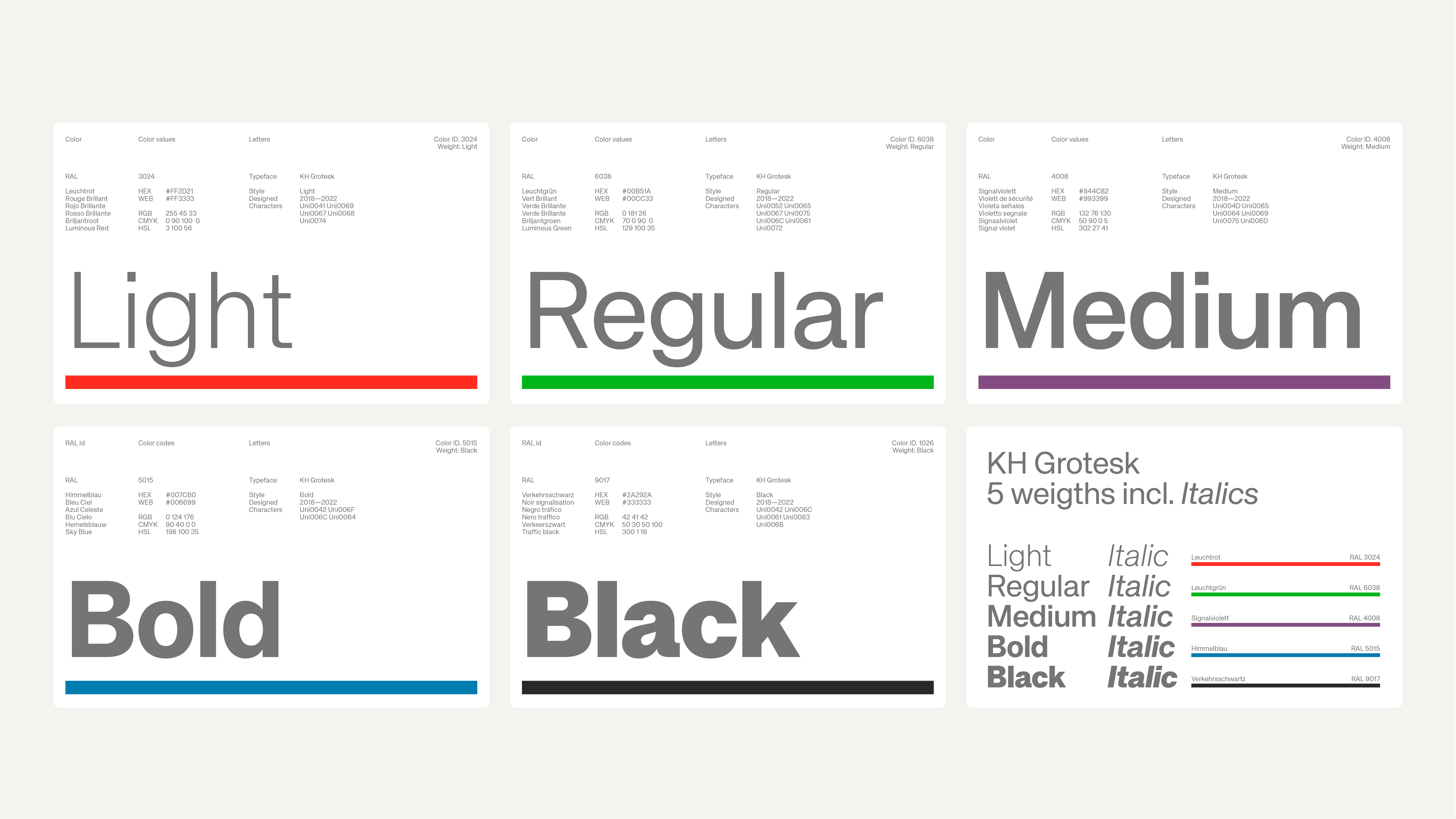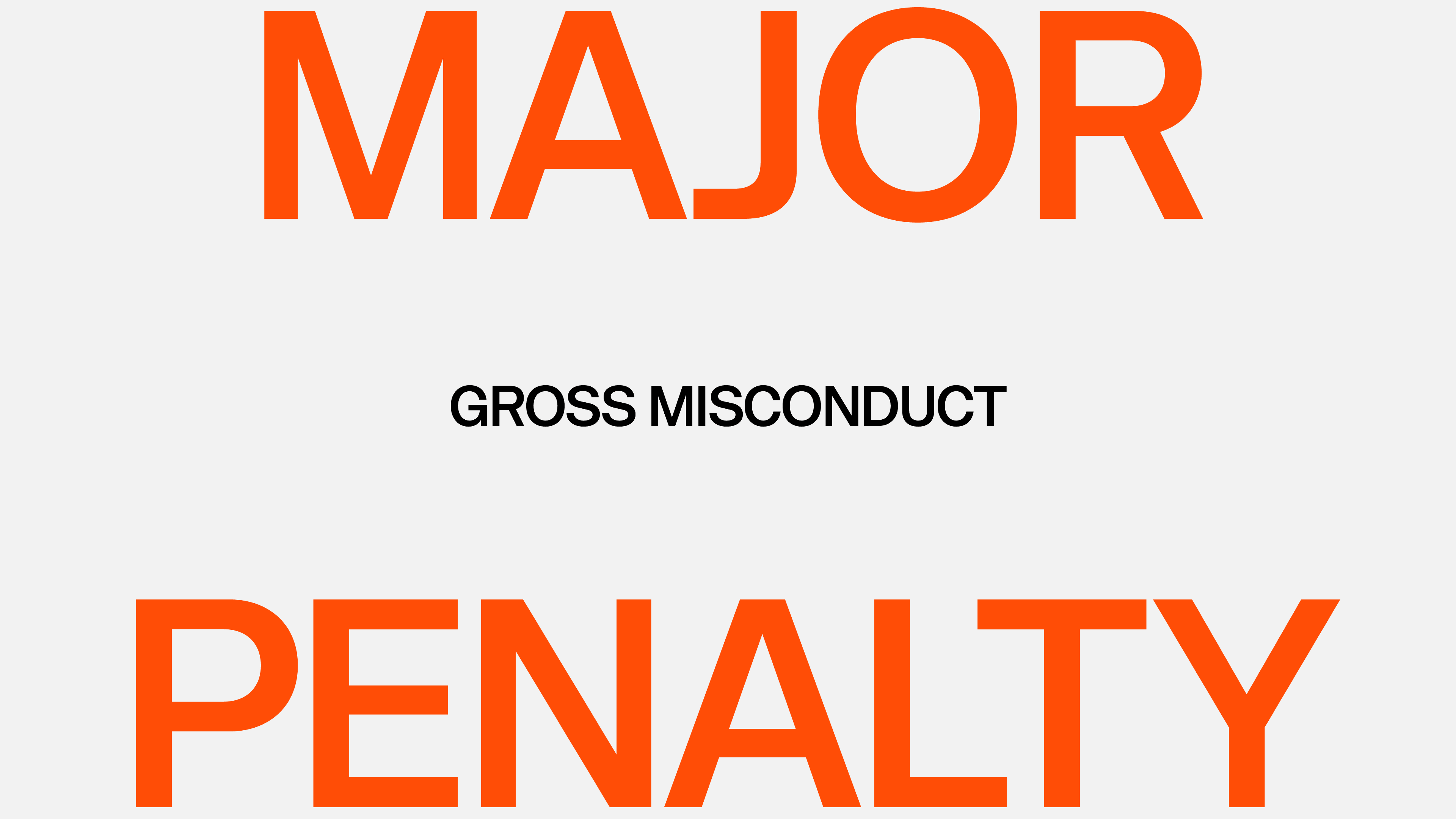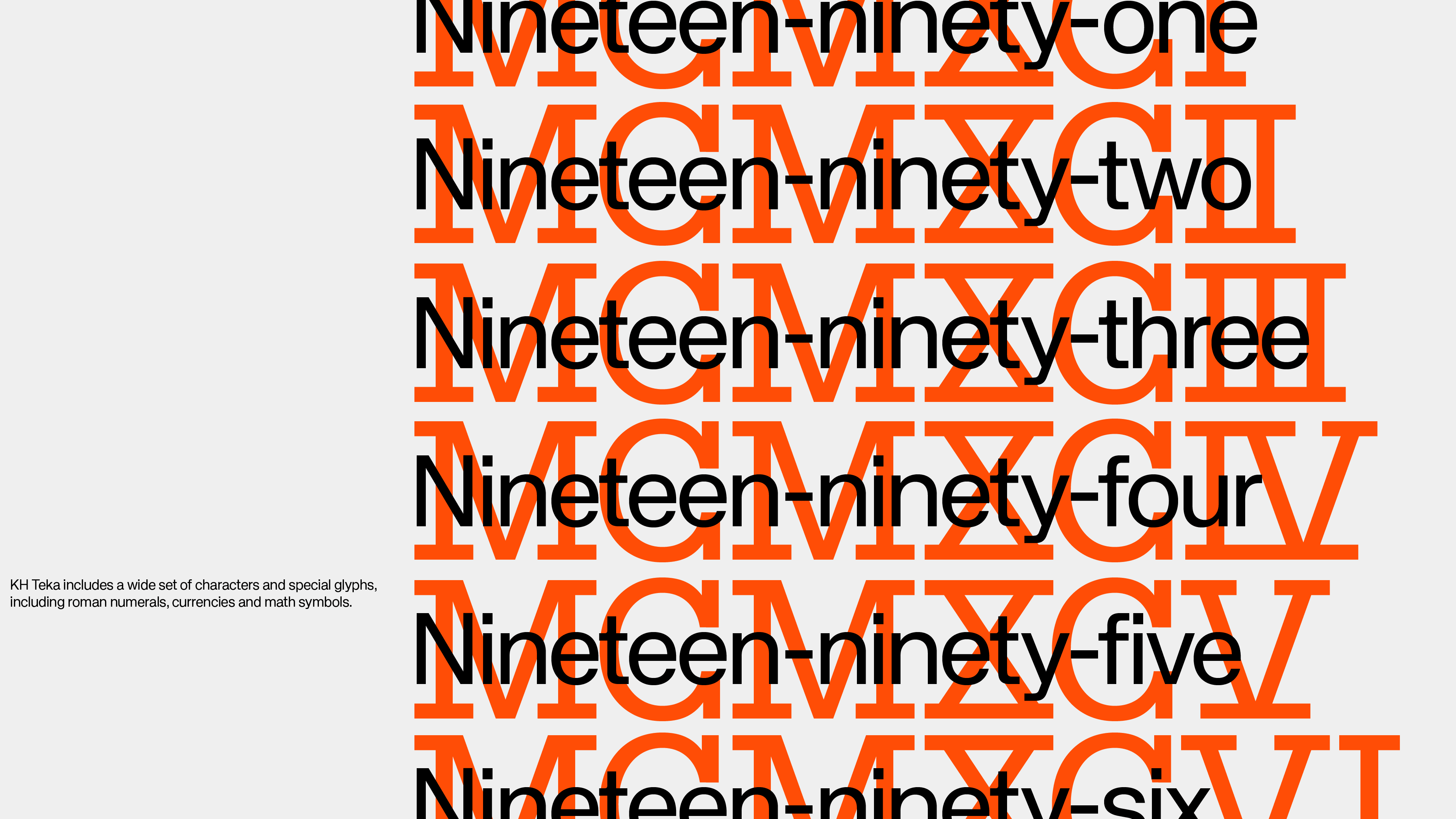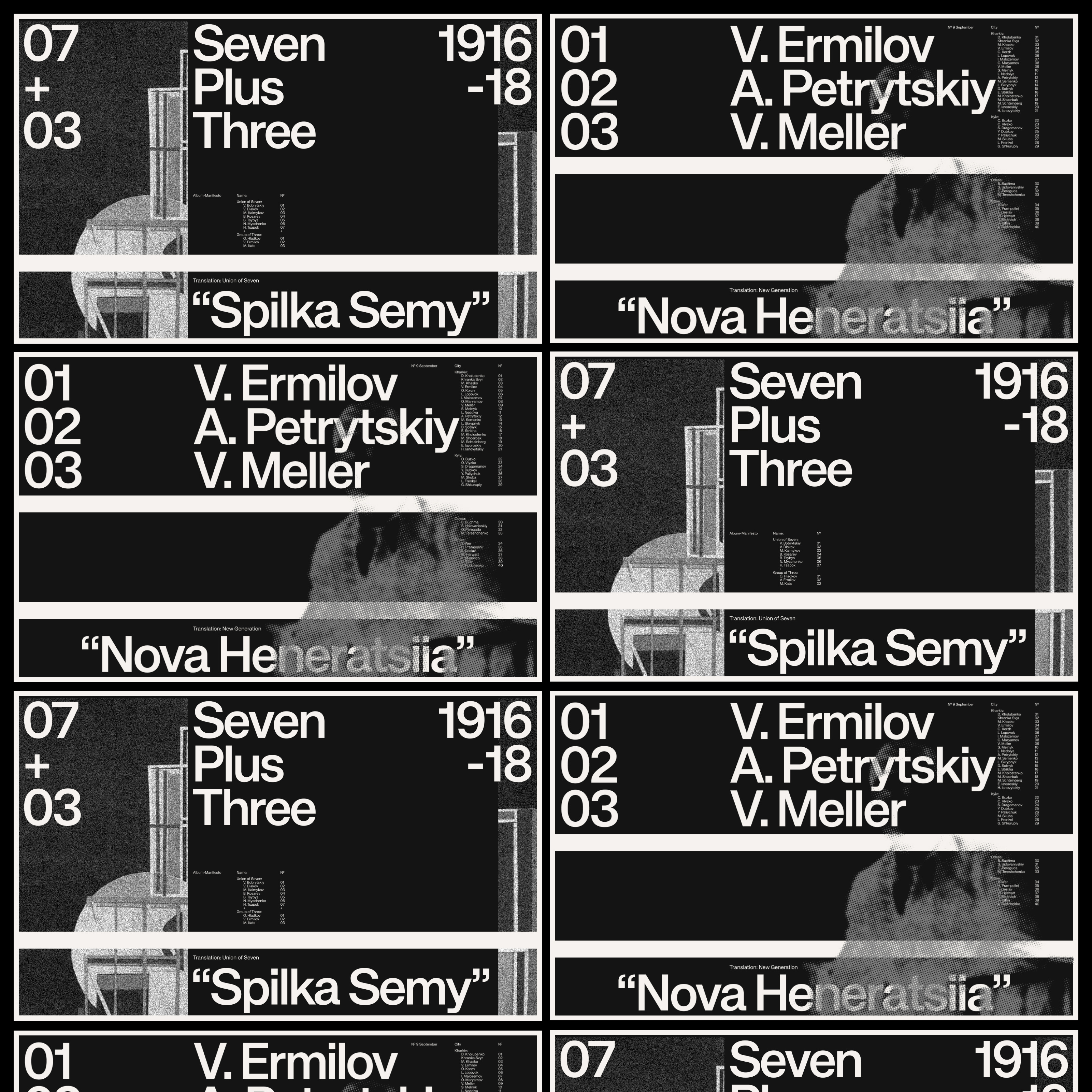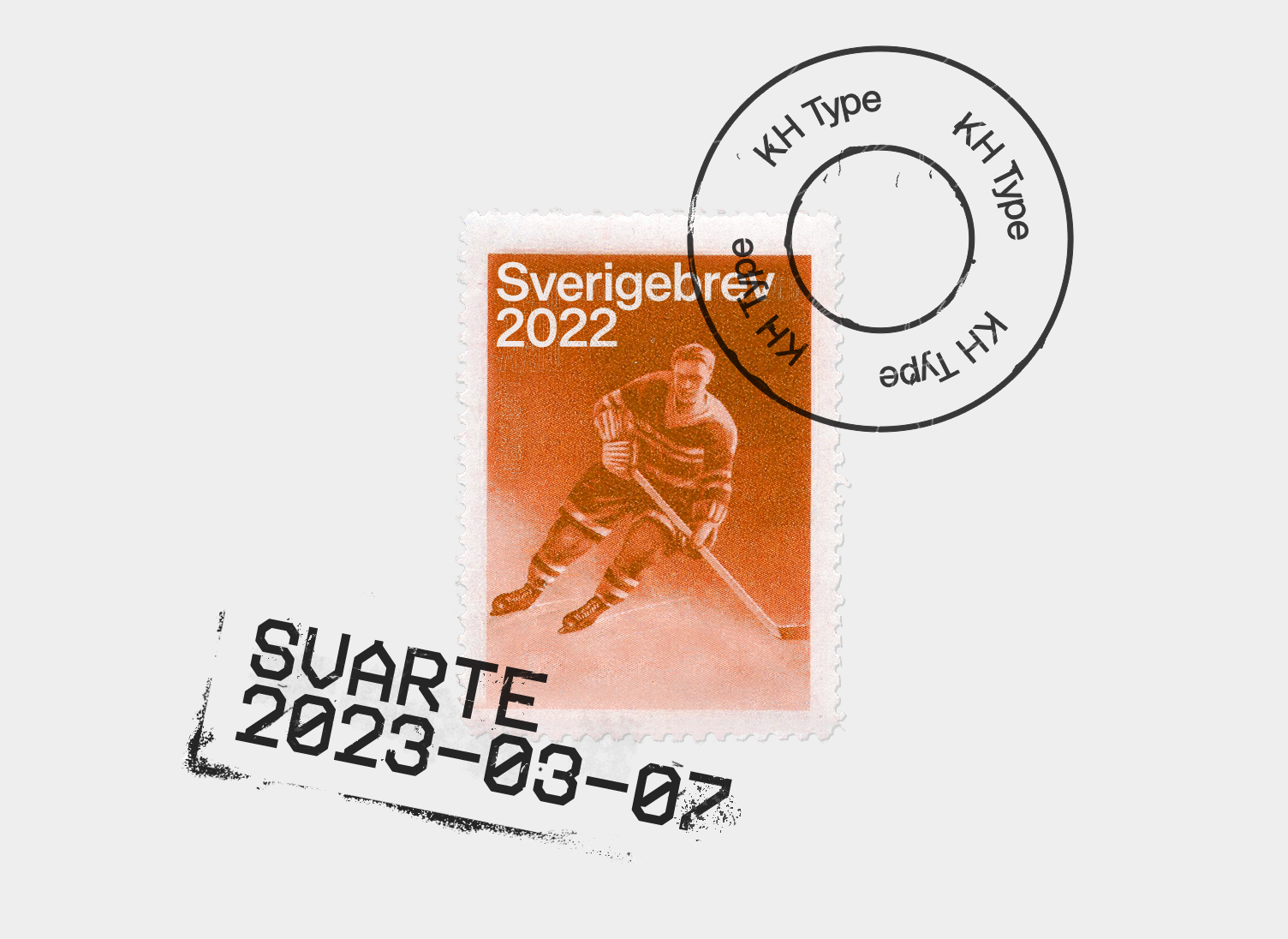KH Teka
KH Teka is a modern grotesque with a rigid and mechanical approach. It's highly versatile and covers a wide range of characters and opentype features.
KH Teka Light
KH Teka Light Italic
KH Teka Regular
KH Teka Regular Italic
KH Teka Medium
KH Teka Medium Italic
KH Teka Bold
KH Teka Bold Italic
KH Teka Black
KH Teka Black Italic
Uppercase latin
Lowercase latin
Extended uppercase latin
Extended lowercase latin
Punctuation & symbols
Math
Currency
Numbers
Tabular numbers
Oldstyle numbers
Roman numbers
Circled numbers
Fractions
Arrows
[KH Teka Black, 13px] The first recorded use of the word hockey is in the 1773 book Juvenile Sports and Pastimes, to Which Are Prefixed, Memoirs of the Author: Including a New Mode of Infant Education by Richard Johnson (Pseud. Master Michel Angelo), whose chapter XI was titled "New Improvements on the Game of Hockey". The belief that hockey was mentioned in a 1363 proclamation by King Edward III of England is based on modern translations of the proclamation, which was originally in Latin and explicitly forbade the games "Pilam Manualem, Pedivam, & Bacularem: & ad Canibucam & Gallorum Pugnam". The English historian and biographer John Strype did not use the word "hockey" when he translated the proclamation in 1720, instead translating "Canibucam" as "Cambuck"; this may have referred to either an early form of hockey or a game more similar to golf or croquet. (https://en.wikipedia.org/wiki/Hockey)
[KH Teka Black Italic, 13px] The first recorded use of the word hockey is in the 1773 book Juvenile Sports and Pastimes, to Which Are Prefixed, Memoirs of the Author: Including a New Mode of Infant Education by Richard Johnson (Pseud. Master Michel Angelo), whose chapter XI was titled "New Improvements on the Game of Hockey". The belief that hockey was mentioned in a 1363 proclamation by King Edward III of England is based on modern translations of the proclamation, which was originally in Latin and explicitly forbade the games "Pilam Manualem, Pedivam, & Bacularem: & ad Canibucam & Gallorum Pugnam". The English historian and biographer John Strype did not use the word "hockey" when he translated the proclamation in 1720, instead translating "Canibucam" as "Cambuck"; this may have referred to either an early form of hockey or a game more similar to golf or croquet. (https://en.wikipedia.org/wiki/Hockey)
[KH Teka Bold, 13px] The first recorded use of the word hockey is in the 1773 book Juvenile Sports and Pastimes, to Which Are Prefixed, Memoirs of the Author: Including a New Mode of Infant Education by Richard Johnson (Pseud. Master Michel Angelo), whose chapter XI was titled "New Improvements on the Game of Hockey". The belief that hockey was mentioned in a 1363 proclamation by King Edward III of England is based on modern translations of the proclamation, which was originally in Latin and explicitly forbade the games "Pilam Manualem, Pedivam, & Bacularem: & ad Canibucam & Gallorum Pugnam". The English historian and biographer John Strype did not use the word "hockey" when he translated the proclamation in 1720, instead translating "Canibucam" as "Cambuck"; this may have referred to either an early form of hockey or a game more similar to golf or croquet. (https://en.wikipedia.org/wiki/Hockey)
[KH Teka Bold Italic, 13px] The first recorded use of the word hockey is in the 1773 book Juvenile Sports and Pastimes, to Which Are Prefixed, Memoirs of the Author: Including a New Mode of Infant Education by Richard Johnson (Pseud. Master Michel Angelo), whose chapter XI was titled "New Improvements on the Game of Hockey". The belief that hockey was mentioned in a 1363 proclamation by King Edward III of England is based on modern translations of the proclamation, which was originally in Latin and explicitly forbade the games "Pilam Manualem, Pedivam, & Bacularem: & ad Canibucam & Gallorum Pugnam". The English historian and biographer John Strype did not use the word "hockey" when he translated the proclamation in 1720, instead translating "Canibucam" as "Cambuck"; this may have referred to either an early form of hockey or a game more similar to golf or croquet. (https://en.wikipedia.org/wiki/Hockey)
[KH Teka Medium, 13px] The first recorded use of the word hockey is in the 1773 book Juvenile Sports and Pastimes, to Which Are Prefixed, Memoirs of the Author: Including a New Mode of Infant Education by Richard Johnson (Pseud. Master Michel Angelo), whose chapter XI was titled "New Improvements on the Game of Hockey". The belief that hockey was mentioned in a 1363 proclamation by King Edward III of England is based on modern translations of the proclamation, which was originally in Latin and explicitly forbade the games "Pilam Manualem, Pedivam, & Bacularem: & ad Canibucam & Gallorum Pugnam". The English historian and biographer John Strype did not use the word "hockey" when he translated the proclamation in 1720, instead translating "Canibucam" as "Cambuck"; this may have referred to either an early form of hockey or a game more similar to golf or croquet. (https://en.wikipedia.org/wiki/Hockey)
[KH Teka Medium Italic, 13px] The first recorded use of the word hockey is in the 1773 book Juvenile Sports and Pastimes, to Which Are Prefixed, Memoirs of the Author: Including a New Mode of Infant Education by Richard Johnson (Pseud. Master Michel Angelo), whose chapter XI was titled "New Improvements on the Game of Hockey". The belief that hockey was mentioned in a 1363 proclamation by King Edward III of England is based on modern translations of the proclamation, which was originally in Latin and explicitly forbade the games "Pilam Manualem, Pedivam, & Bacularem: & ad Canibucam & Gallorum Pugnam". The English historian and biographer John Strype did not use the word "hockey" when he translated the proclamation in 1720, instead translating "Canibucam" as "Cambuck"; this may have referred to either an early form of hockey or a game more similar to golf or croquet. (https://en.wikipedia.org/wiki/Hockey)
[KH Teka Regular, 13px] The first recorded use of the word hockey is in the 1773 book Juvenile Sports and Pastimes, to Which Are Prefixed, Memoirs of the Author: Including a New Mode of Infant Education by Richard Johnson (Pseud. Master Michel Angelo), whose chapter XI was titled "New Improvements on the Game of Hockey". The belief that hockey was mentioned in a 1363 proclamation by King Edward III of England is based on modern translations of the proclamation, which was originally in Latin and explicitly forbade the games "Pilam Manualem, Pedivam, & Bacularem: & ad Canibucam & Gallorum Pugnam". The English historian and biographer John Strype did not use the word "hockey" when he translated the proclamation in 1720, instead translating "Canibucam" as "Cambuck"; this may have referred to either an early form of hockey or a game more similar to golf or croquet. (https://en.wikipedia.org/wiki/Hockey)
[KH Teka Regular Italic, 13px] The first recorded use of the word hockey is in the 1773 book Juvenile Sports and Pastimes, to Which Are Prefixed, Memoirs of the Author: Including a New Mode of Infant Education by Richard Johnson (Pseud. Master Michel Angelo), whose chapter XI was titled "New Improvements on the Game of Hockey". The belief that hockey was mentioned in a 1363 proclamation by King Edward III of England is based on modern translations of the proclamation, which was originally in Latin and explicitly forbade the games "Pilam Manualem, Pedivam, & Bacularem: & ad Canibucam & Gallorum Pugnam". The English historian and biographer John Strype did not use the word "hockey" when he translated the proclamation in 1720, instead translating "Canibucam" as "Cambuck"; this may have referred to either an early form of hockey or a game more similar to golf or croquet. (https://en.wikipedia.org/wiki/Hockey)
[KH Teka Light, 13px] The first recorded use of the word hockey is in the 1773 book Juvenile Sports and Pastimes, to Which Are Prefixed, Memoirs of the Author: Including a New Mode of Infant Education by Richard Johnson (Pseud. Master Michel Angelo), whose chapter XI was titled "New Improvements on the Game of Hockey". The belief that hockey was mentioned in a 1363 proclamation by King Edward III of England is based on modern translations of the proclamation, which was originally in Latin and explicitly forbade the games "Pilam Manualem, Pedivam, & Bacularem: & ad Canibucam & Gallorum Pugnam". The English historian and biographer John Strype did not use the word "hockey" when he translated the proclamation in 1720, instead translating "Canibucam" as "Cambuck"; this may have referred to either an early form of hockey or a game more similar to golf or croquet. (https://en.wikipedia.org/wiki/Hockey)
[KH Teka Light Italic, 13px] The first recorded use of the word hockey is in the 1773 book Juvenile Sports and Pastimes, to Which Are Prefixed, Memoirs of the Author: Including a New Mode of Infant Education by Richard Johnson (Pseud. Master Michel Angelo), whose chapter XI was titled "New Improvements on the Game of Hockey". The belief that hockey was mentioned in a 1363 proclamation by King Edward III of England is based on modern translations of the proclamation, which was originally in Latin and explicitly forbade the games "Pilam Manualem, Pedivam, & Bacularem: & ad Canibucam & Gallorum Pugnam". The English historian and biographer John Strype did not use the word "hockey" when he translated the proclamation in 1720, instead translating "Canibucam" as "Cambuck"; this may have referred to either an early form of hockey or a game more similar to golf or croquet. (https://en.wikipedia.org/wiki/Hockey)
Opentype features
Hairline punctuation and symbols
Alternate [at]
No-tail a
Straight y
Curvy J
Alternate &
Alternate 1
Circular dots
Squared numbers
Single-storey a
Punctuation at cap height
Case-sensitive forms
Superscript
Discretionary ligatures
KH Teka
Family
10 styles
Light, Light Italic
Regular, Regular Italic
Medium, Medium Italic
Bold, Bold Italic
Black, Black Italic
KH Teka is a modern grotesque with a rigid approach to how curves, details and metrics are applied. It is designed in close collaboration with the brilliant minds at Kurppa Hosk, which has heavily informed the design into being a versatile workhorse of a typeface. Truly a “by designers, for designers” kind of thing. It comes in five weights with corresponding italics and has a wide range of opentype features. The character set is extensive and counts in on 870 glyphs, including a wide variety of arrows, currency symbols and number variations.
KH Teka will be an evolving family of fonts, and the upcoming planned additions are varying widths, extended language support and a monospaced version.
Production year
2018–2022
Designers
Kurppa Hosk
Jakob Ekelund
Wille Larsson
Opentype features
aalt / Access All Alternates
ccmp / Glyph Composition—Decomposition
locl / Localized Forms
subs / Subscript
sups / Superscript
sinf / Scientific Inferiors
numr / Numerators
dnom / Denominators
frac / Fractions
ordn / Ordinals
lnum / Lining Figures
pnum / Proportional Figures
tnum / Tabular Figures
onum / Oldstyle Figures
case / Case-Sensitive Forms
dlig / Discretionary Ligatures
liga / Standard Ligatures
calt / Contextual Alternates
ss01—ss11 / Stylistic Set 1—11
Font formats
.otf
.ttf
.woff
.woff2
Language support
Afrikaans
Albanian
Asu
Basque
Bemba
Bena
Breton
Catalan
Chiga
Colognian
Cornish
Croatian
Czech
Danish
Dutch
Embu
English
Esperanto
Estonian
Faroese
Filipino
Finnish
French
Friulian
Galician
Ganda
German
Gusii
Hungarian
Inari Sami
Indonesian
Irish
Italian
Jola-Fonyi
Kabuverdianu
Kalenjin
Kamba
Kikuyu
Kinyarwanda
Latvian
Lithuanian
Lower Sorbian
Luo
Luxembourgish
Luyia
Machame
Makhuwa-Meetto
Makonde
Malagasy
Maltese
Manx
Meru
Morisyen
Northern Sami
North Ndebele
Norwegian Bokmål
Norwegian Nynorsk
Nyankole
Oromo
Polish
Portuguese
Quechua
Romanian
Romansh
Rombo
Rundi
Rwa
Samburu
Sango
Sangu
Scottish Gaelic
Sena
Serbian
Shambala
Shona
Slovak
Soga
Somali
Spanish
Swahili
Swedish
Swiss German
Taita
Teso
Turkish
Upper Sorbian
Uzbek (Latin)
Volapük
Vunjo
Walser
Welsh
Western Frisian
Zulu
